An adverb is a word that modifies a sentence, verb, or adjective. An adverb can be a word or simply an expression that can even change prepositions, and clauses. An adverb usually ends only- but some are the same as their adjectives counterparts.
Adverbs express the time, place, frequency, and level of certainty. The functions of adverbs are performed by a single word known as an adverb or multi-words, called adverbial functions. In simple words, an adverb is a word that describes verbs. Adverbs are also used to add or modify the meaning of an adjective, a verb, a preposition, a sentence, a clause. We can add more information to the words, using different kinds of Adverbs.
Hence, Adverbs are a part of speech and express the manner, time, place, frequency, degree, and much more about a verb. They also act as a verb phrase which includes a verb and its dependents. We have lostourway in this wood.In this sentence, the possessive adjective "our" modifies "way" and the noun phrase "our way" is the direct object of the compound verb"have lost".
Note that the possessive pronoun form "ours" is not used to modify nouns or noun phrases. A good way to understand adverbs is to think about them as the words that provide context. Specifically, adverbs provide a description of how, where, when, in what manner and to what extent something is done or happens. Normally, we can spot an adverb by the fact that it often ends in –ly, but there are lots of adverbs that don't end in this way.
Moreover, adverbs can be used in many combinations with each other. Thank you for the examples of adverbs gone wrong. If we pick our words we care, we don't need weak adjectives and adverbs.
Yes, they do have their place in writing, but the English language has so many words to choose from. Choose the right one, and your writing will leap off the page and connect with the reader. Adverb plays a vital role in the modification of adjectives and verbs in the Grammar. English being an Anglo-Saxon language, has diversity in it.
Adverbs make this language easy by delivering a precise and concise point of view in a single word. A single adverb demonstrates the meaning of the whole sentence. There are many types of adverbs that help with identification of place and time in sentences.
In traditional English Grammar, adverbs are categorized as parts of speech. The adverbs of manners are formed by adding ly- to the adjectives. However, flat adverbs are formed as a result of corresponding adjectives.
Other languages also have a similar method to drive adverbs from the adjectives. For example, the French use the suffix-meant, Examples of adverbs in English include here, together, yesterday, and almost. The principal function of an adverb is to modify verbs and verb phrases. In this way, it can provide information in relation with time, place, frequency, certainty, manner, and other circumstance. An adverb also intensifies meanings of words it modifies.
What Is Verb And Adverb Explain Its Types With Examples It does so by emphasizing the words, intensifying their meanings, and toning down the feelings they carry. Adverbs can mystify writers because they have a number of different functions within the English language. Reviewing examples of adverbs and adverb phrases can help you identify them and use this part of speech effectively. With a couple adverbs by your side, you can add further description, describe an action, or intensify the meaning of another word.
Just as adjectives modify nouns and pronouns, adverbs modify verbs, adjectives, and other adverbs. Adjectives modify nouns and pronouns; adverbs modify verbs, adjectives, and other adverbs. In this sentence, "what" modifies "book" and the noun phrase "what book" is the direct object of the compound verb "are reading." I can't completemyassignment because I don't have the textbook.In this sentence, the possessive adjective "my" modifies "assignment" and the noun phrase "my assignment" functions as an object. Note that the possessive pronoun form "mine" is not used to modify a noun or noun phrase.
Adverbs impact the sentences and implement many changes. A single adverb can change the meaning of a sentence. The high authority function of an adverb is that it acts as modifier of verbs and verb phrases.
An adverb used in a sentence can provide essential information such as time, place, frequency, certainty, and other related circumstances. An adverb is a word used to define or modify the verb, adjective, or sentence. These adverbs convey the place, time, frequency, level of certainty, etc., or you can say that we use adverbs to answer questions like how? We may use single adverbs of more than one in a sentence to express the whole meaning. Adverb phrases function like adverbs, modifying a verb or adjective.
They add more information to a sentence, telling us when, how, where, and to what extent. Adverb phrases don't always contain an adverb and can start with a preposition or the infinitive form of a verb. Adverbs of purpose, sometimes called adverbs of reason, help to describe why something happened. They can come in the form of individual words – so, since, thus, because – but also clauses – so that, in order to.
Notice in the examples that the adverbs of purpose are used to connect sentences that wouldn't make sense if they were formed alone. Adverbs are often formed by adding the letters "-ly" to adjectives. This makes it very easy to identify adverbs in sentences. There are many exceptions to this rule; everywhere, nowhere, and upstairs are a few examples. Adverbs are words that describe verbs, adjectives, or other adverbs. Adverbs give us more information about how something is being done or the degree to which something is true.
Adverbs often end with -ly, but there are common adverbs that don't end in -ly . There are also words that end in -ly but aren't adverbs . Some adverbs can modify entire sentences—unsurprisingly, these are called sentence adverbs. Common ones include generally, fortunately, interestingly, and accordingly. Sentence adverbs don't describe one particular thing in the sentence—instead, they describe a general feeling about all of the information in the sentence.
Nouns, verbs, adjectives, and adverbs often have unique word endings, called suffixes. Looking at the suffix can help to distinguish the word from other parts of speech and help identify the function of the word in the sentence. It is important to use the correct word form in written sentences so that readers can clearly follow the intended meaning.
You can use the relative pronouns "who" and "whoever" to refer to the subject of a clause or sentence, and "whom" and "whomever" to refer to the objects of a verb, a verbal or a preposition. Note that the demonstrative pronouns are identical to demonstrative adjectives, though, obviously, you use them differently. It is also important to note that "that" can also be used as a relative pronoun. Adverbs fall into various categories, as some adverbs are used to modify a whole sentence, while some change the sentence's meaning.
The modification provides information about the time, place, manner, frequency, certainty, and other verb phrases in the sentence. " confirm exactly which object the writer is referring to. Examples include phrases such as "that novel," "this writer," or "those students." Most adjectives that serve this purpose are called determiners or demonstrative pronouns. Adjectives, like "great," "enormous," "stony," "long," and "beautiful," modify nouns and pronouns. Adverbs, like "simply" and "incredibly," modify verbs, adjectives, and other adverbs.
Adverbs modify verbs, adjectives, or other adverbs. They can add to or change the meaning of a word. A great way to spot adverbs is to look for words that end in -ly.
Adverbs are words that usually modify—that is, they limit or restrict the meaning of—verbs. They may also modify adjectives, other adverbs, phrases, or even entire sentences. A noun is a word for a person, place, thing, or idea. Nouns are often used with an article , but not always. Proper nouns always start with a capital letter; common nouns do not.
Nouns can be singular or plural, concrete or abstract. Nouns can function in different roles within a sentence; for example, a noun can be a subject, direct object, indirect object, subject complement, or object of a preposition. The adverbs in each of the sentences above answer the question in what manner? Adverbs can answer other types of questions about how an action was performed. You know that words that modify nouns are adjectives.
Words that modify verbs, adjectives, or adverbs are adverbs. Aprepositionlinks nouns, pronouns and phrases to other words in a sentence. The word or phrase that the preposition introduces is called the object of the preposition. This type of adverb explains how the action is carried out.
Usually, the adverb of manners is the adjectives with –ly added to the end part. Some adverbs have the exact spellings as the adjective form. A list of adverbs, plus definitions and examples of how to use different types of adverbs in a sentence. You know adjectives and adverbs are both words that describe something.
But for many people, these words are also easy to mix up. Thankfully, there are some simple rules that will help you know which is which and when to use them. Above all, it should always be clear to the reader which word an adjective, adverb, or modifying phrase is describing. In situations where modifiers are used incorrectly, the result is a dangling modifier, a misplaced modifier, or a squinting modifier. Remember, adjectives and adverbs can be separated by which types of information they provide.
Think about the details that are necessary to include, and then choose your modifiers accordingly. When an adverb modifies a whole sentence or clause, it is called a sentence adverb. Words such as fortunately, frankly, hopefully, and luckily are generally used as sentence adverbs and usually express the speaker's feelings about the content of the sentence. Such adverbs normally come at the beginning of a sentence, but may also come in the middle or at the end.
Notice how the adverbs are formed by adding -ly to the adjectives bad, correct and quick, although there is a slight spelling change when forming an adverb with the adjective easy. An adverb of manner will explain how an action is carried out. Very often adverbs of manner are adjectives with -ly added to the end, but this is certainly not always the case. In fact, some adverbs of manner will have the same spelling as the adjective form.
There are several different parts of speech, which are categories of types of words. We are going to talk about four of the main eight parts of speech, which are nouns, verbs, adjectives, and adverbs. Understanding the parts of speech will teach you to use words properly in a sentence and become a better writer. Adjectives and adverbs are two different types of word classes or types of speech. Other examples include nouns, pronouns, and verbs. Adjectives are used to describe nouns and pronouns and adverbs are used to describe verbs.
Adjectives and adverbs have different functions in sentences. The difference between them is that adjectives describe nouns , and adverbs describe verbs . Anadverbcan modify a verb, an adjective, another adverb, a phrase, or a clause.
An adverb indicates manner, time, place, cause, or degree and answers questions such as "how," "when," "where," "how much". Interrogative PronounsAninterrogative pronounis used to ask questions. The interrogative pronouns are "who," "whom," "which," "what" and the compounds formed with the suffix "ever" ("whoever," "whomever," "whichever," and "whatever").




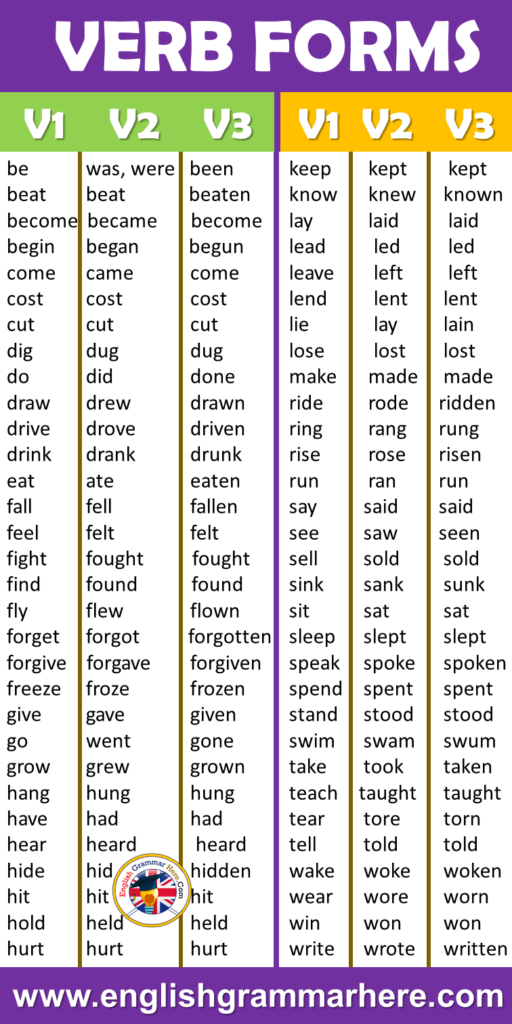





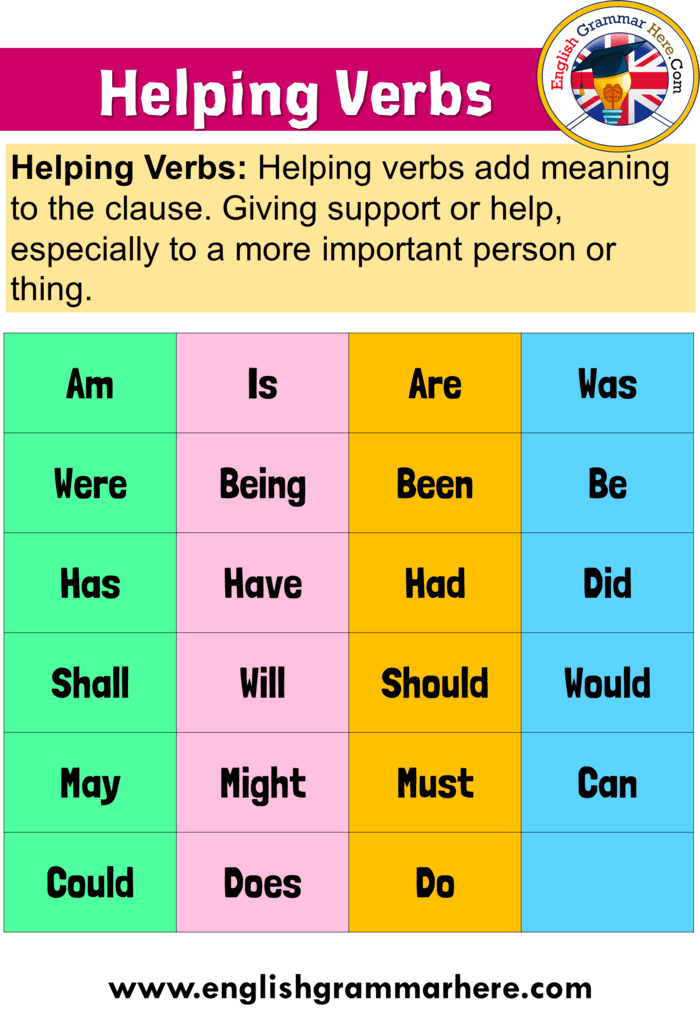



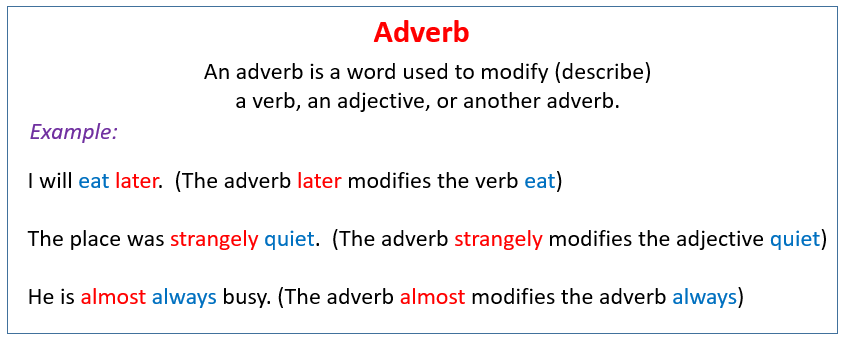


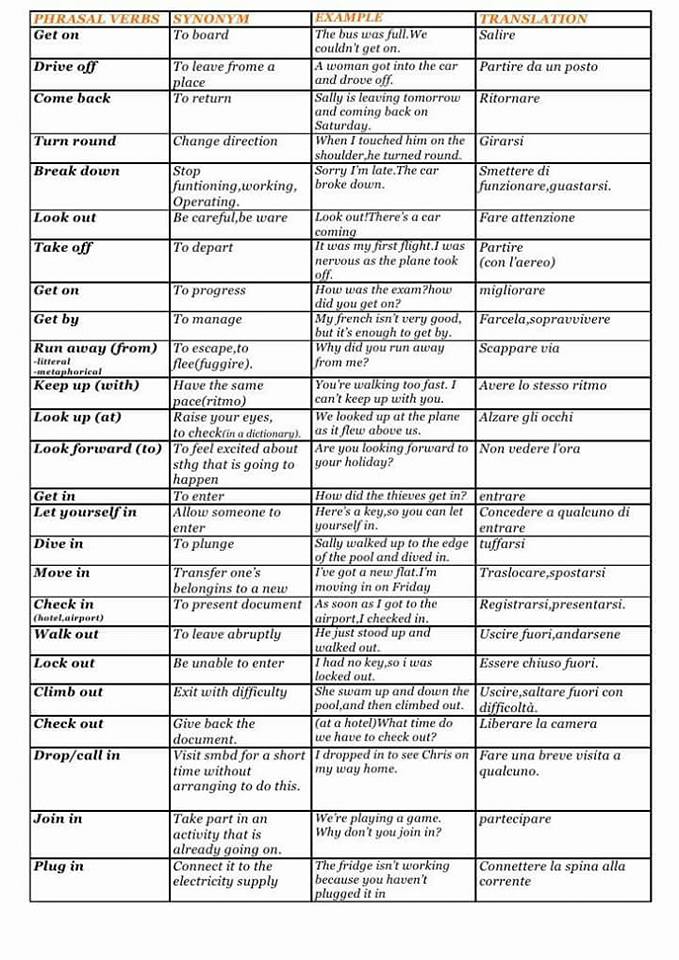





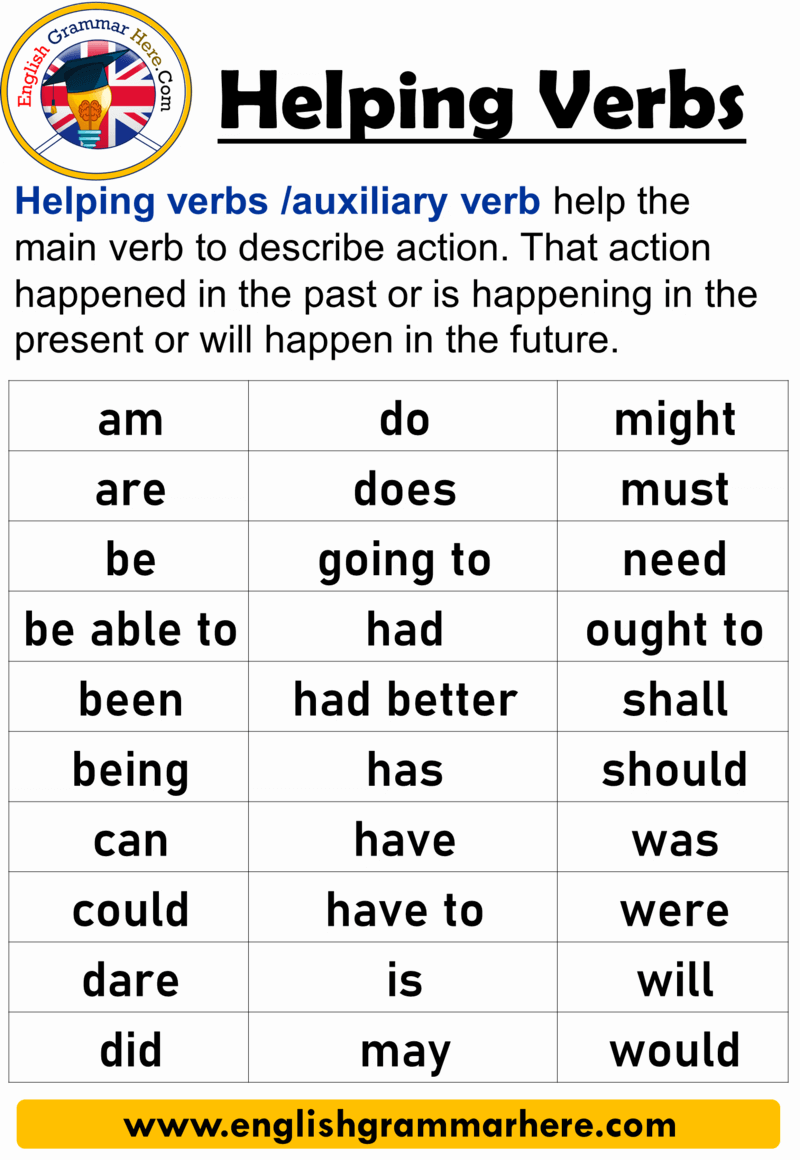




No comments:
Post a Comment
Note: Only a member of this blog may post a comment.